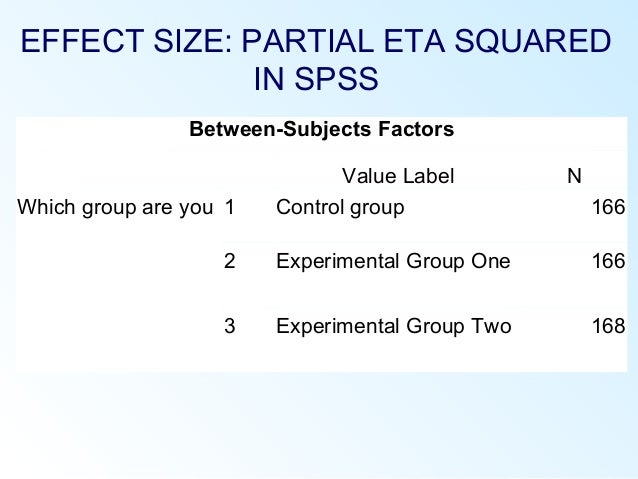

Klauer (2001) proposes to compute g for both groups and to subtract them afterwards. In many cases, the pretest means and standard deviations of both groups do not match and there are a number of possibilities to deal with that problem. Intervention studies usually compare the development of at least two groups (in general an experimental group and a control group). Effect size for mean differences of groups with unequal sample size within a pre-post-control design **The Common Language Effect Size (CLES) is calculated by using the cumulative probability of divided by 1.41 via CLES = Φ d 2ģ. Usually it is simply called d Cohen or g Hedges to indicate, it is a corrected measure. Following this logic, g Hedges should be called h and not g. 27), who first suggested corrected measures. The letter is stemming from the author Glass (see Ellis, 2010, S. On the other hand, corrected effect sizes were called g since the beginning of the 80s. *Unfortunately, the terminology is imprecise on this effect size measure: Originally, Hedges and Olkin referred to Cohen and called their corrected effect size d as well. In the calculator, we take the higher group mean as the point of reference, but you can use (1 - CLES) to reverse the view.Īdditionally, you can compute the confidence interval for the effect size and chose a desired confidence coefficient (calculation according to Hedges & Olkin, 1985, p. The Common Language Effect Size (CLES McGraw & Wong, 1992) is a non-parametric effect size, specifying the probability that one case randomly drawn from the one sample has a higher value than a randomly drawn case from the other sample. Please have a look at the remarks bellow the table. In the literature, usually this computation is called Cohen's d as well. This approach is overall identical with d Cohen with a correction of a positive bias in the pooled standard deviation. Comparison of groups with different sample size ( Cohen's d, Hedges' g)Īnalogously, the effect size can be computed for groups with different sample size, by adjusting the calculation of the pooled standard deviation with weights for the sample sizes. (Total number of observations in both groups)Ģ. In the calculator, we take the higher group mean as the point of reference, but you can use (1 - CLES) to reverse the view. Please type the data of the control group in column 2 for the correct calculation of Glass' Δ.įinally, the Common Language Effect Size (CLES McGraw & Wong, 1992) is a non-parametric effect size, specifying the probability that one case randomly drawn from the one sample has a higher value than a randomly drawn case from the other sample. This effect size measure is called Glass' Δ ("Glass' Delta"). He argues that the standard deviation of the control group should not be influenced, at least in case of non-treatment control groups. In case of relevant differences in the standard deviations, Glass suggests not to use the pooled standard deviation but the standard deviation of the control group. for calculating the effect for pre-post comparisons in single groups. The resulting effect size is called d Cohen and it represents the difference between the groups in terms of their common standard deviation. If the two groups have the same n, then the effect size is simply calculated by subtracting the means and dividing the result by the pooled standard deviation. Comparison of groups with equal size (Cohen's d and Glass Δ) Please click on the grey bars to show the calculators: 1. Here you will find a number of online calculators for the computation of different effect sizes and an interpretation table at the bottom of this page. The most popular effect size measure surely is Cohen's d (Cohen, 1988), but there are many more. In order to describe, if effects have a relevant magnitude, effect sizes are used to describe the strength of a phenomenon. in epidemiological studies or in large scale assessments, very small effects may reach statistical significance.

If large data sets are at hand, as it is often the case f. Statistical significance mainly depends on the sample size, the quality of the data and the power of the statistical procedures. it may even describe a phenomenon that is not really perceivable in everyday life. But not every significant result refers to an effect with a high impact, resp. Statistical significance specifies, if a result may not be the cause of random variations within the data.


 0 kommentar(er)
0 kommentar(er)
